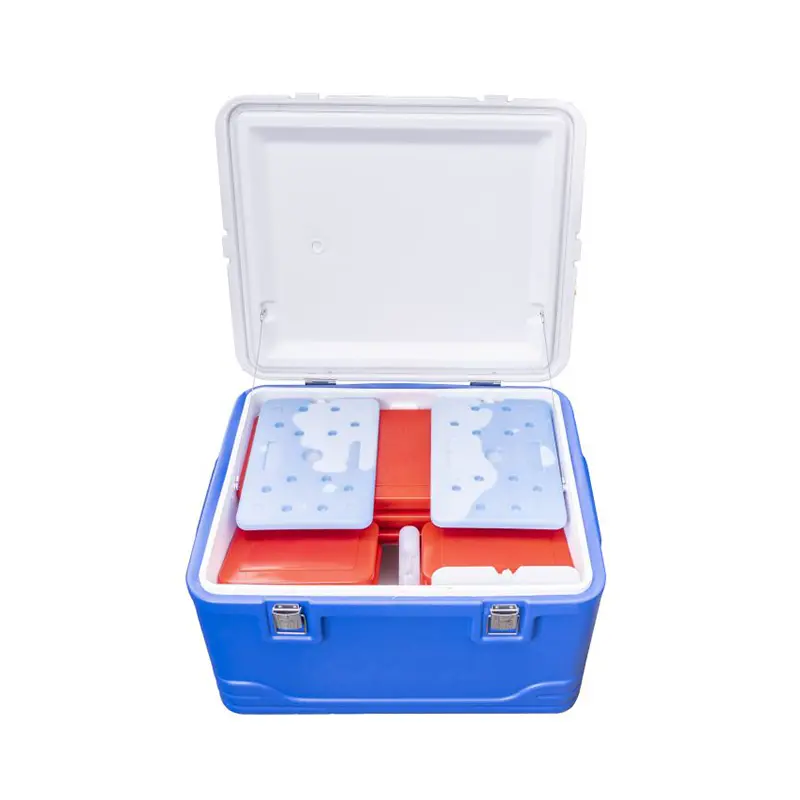
In the past, the cold chain transport solution primarily involved using refrigerated trucks to transport products from one location to another. Typically, these trucks would carry a minimum of 500 kg to 1 ton of goods and deliver them to various destinations within a city or country.
However, the changing landscape of commerce, including the rise of direct-to-consumer channels, the growth of e-commerce, and increased demand for niche and exclusive products, requires new approaches and innovations to meet these challenges. This presents an intriguing opportunity for both large and small brands, as well as a fresh set of options for consumers. Nevertheless, these growth opportunities also bring significant operational and supply chain challenges, necessitating the exploration of new solutions.
Significant fundamental rethinking has been required in the cold supply chain, with PCM technology-based solutions offering the potential to disrupt the asset-driven cold chain logistics industry, which was originally designed for the Western world with its distinct demography and retail infrastructure. The emergence of new commerce not only demands new technological alternatives but also encourages traditional commerce to evolve in tandem. For instance, many organized retailers are pursuing the establishment of dark stores to enhance their accessibility and reduce delivery times. Additionally, there is a growing interest among brands in establishing a distributor-to-kirana/retail store cold chain using these straightforward solutions.
Traditionally, the cold chain has involved the use of refrigerated trucks to transport products from one location to another, typically picking up a minimum of 500 kg to 1 ton of goods and delivering them to various destinations within a city or country. However, the challenge posed by new-commerce lies in the size of the package and the fact that it may be the only cold chain package among many ambient packages being distributed. As a result, the conventional cold chain technology of reefer trucks is not suitable for these scenarios. Instead, we require a solution that is:
– Independent of the vehicle form (such as a bike, 3-wheeler, or 4-wheeler) and package size
– Capable of maintaining temperature without a connection to a power source
– Able to sustain temperature from 1 hour (hyperlocal) to 48 hours (intercity courier)
In this context, solutions utilizing phase change technology or “thermal batteries” have gained significant popularity. These are engineered chemicals with specific freezing and melting points, ranging from +18°C for use with chocolates to -25°C for use with ice creams. Unlike previously used glycols, these materials are designed to be non-toxic and non-flammable, making them suitable for packaging alongside food products. They are typically enclosed in a plastic pouch or bottle (similar to a gel pack) and placed in a freezer for a few hours. Once frozen, they can be placed inside an insulated bag or box to maintain temperatures for a desired period.

Unlike previous options such as gel packs and dry ice, these solutions provide precise temperature control, making them more effective than even a reefer truck for high-frequency distribution. Additionally, different temperatures can be maintained within the same container by using different PCM packs or cartridges, depending on the specific product being delivered. This offers operational flexibility and higher asset utilization without relying on dedicated assets like reefer trucks. These solutions, also known as passive cooled logistics solutions, require virtually no maintenance. The box or bag does not contain any moving parts, minimizing the risk of damage and downtime. These units can range in size from 2 liters all the way up to 2000 liters, providing users with flexibility in size.
From an economic standpoint, the capital expenditure (capex) and operational expenditure (opex) for these solutions are up to 50% lower compared to a refrigerated truck. Additionally, costs are incurred only for the specific amount of space used, rather than for the entire vehicle. These factors provide an unparalleled economic advantage, ensuring cost-effective delivery to the customer every time. Furthermore, these solutions eliminate the use of fossil fuels, which have traditionally powered the cold chain, making them not only economically viable but also environmentally sustainable.
It is noteworthy that despite multiple efforts, most traditional cold chain logistics companies have struggled to adapt their operations to offer these services. I believe that for such applications, both the infrastructure and the mindset need to be very different from conventional cold chain operations, which are focused on warehousing and trucking. Meanwhile, regular e-commerce vendors and last-mile delivery companies like HUIZHOU have stepped in to fill this gap. These solutions align well with their models and give them an advantage over traditional cold chain players. As this sector evolves, it is evident that the ability to adapt to new technologies and innovation will determine the winners in the industry.